This is a guest post written by Jordan Coons. Read more about Jordan at the bottom of this page.
In this article, I will show you how to hit a kick serve with proper technique.
First, I’ll explain what a kick serve is, and how it’s different than other serves. Then, you’ll learn 5 important steps to hitting an effective kick serve including the best times to use a kick serve in a tennis match.
What is a Kick Serve in Tennis?
A kick serve is when the tennis ball is served with a combination of topspin and sidespin, creating a ball that bounces high and moves sideways.
Topspin helps a ball jump up after it hits the tennis court. Sidespin makes a ball move sideways. The kick serve has about a 45-degree angle of rotation, between topspin and sidespin.
Skyrocket your serve strategy in doubles with this FREE 5-day course >>>
The Difference Between a Kick Serve & Slice or Flat Serve
The main difference between the three types of serves is the way the tennis ball spins.
- Flat serves have very little or no spin.
- Slice serves have sidespin causing the ball to move from right to left (for a right-handed player).
- Kick serves spin up and out causing the ball to jump up high and to the side.
You must have proper serve technique to hit each serve effectively, and each of the 3 serves requires slightly different technique.
Next, I will show you five steps that will help you create a proper kick serve motion.
5 Steps to Hit a Kick Serve with the Right Technique
This video from Tennis Beyond covers the 5 steps to hit a kick serve with the right technique.
Step #1: How the Toss Changes for the Kick Serve
Understanding how the toss changes when switching from a flat or slice serve to a kick serve is the first step you need to know when learning this type of serve motion.
Your position when stepping up to the baseline to serve is the same. What changes is the location that we toss the ball to.
COURSE
Net Play Strategy for Doubles
Masterclass on skills, strategy, and mindset for dominant net play in doubles!
- Over 190 minutes of Video Doubles Lessons
- 25 Whiteboard Video Lessons
- Video Analysis of over 30 ATP & WTA doubles points
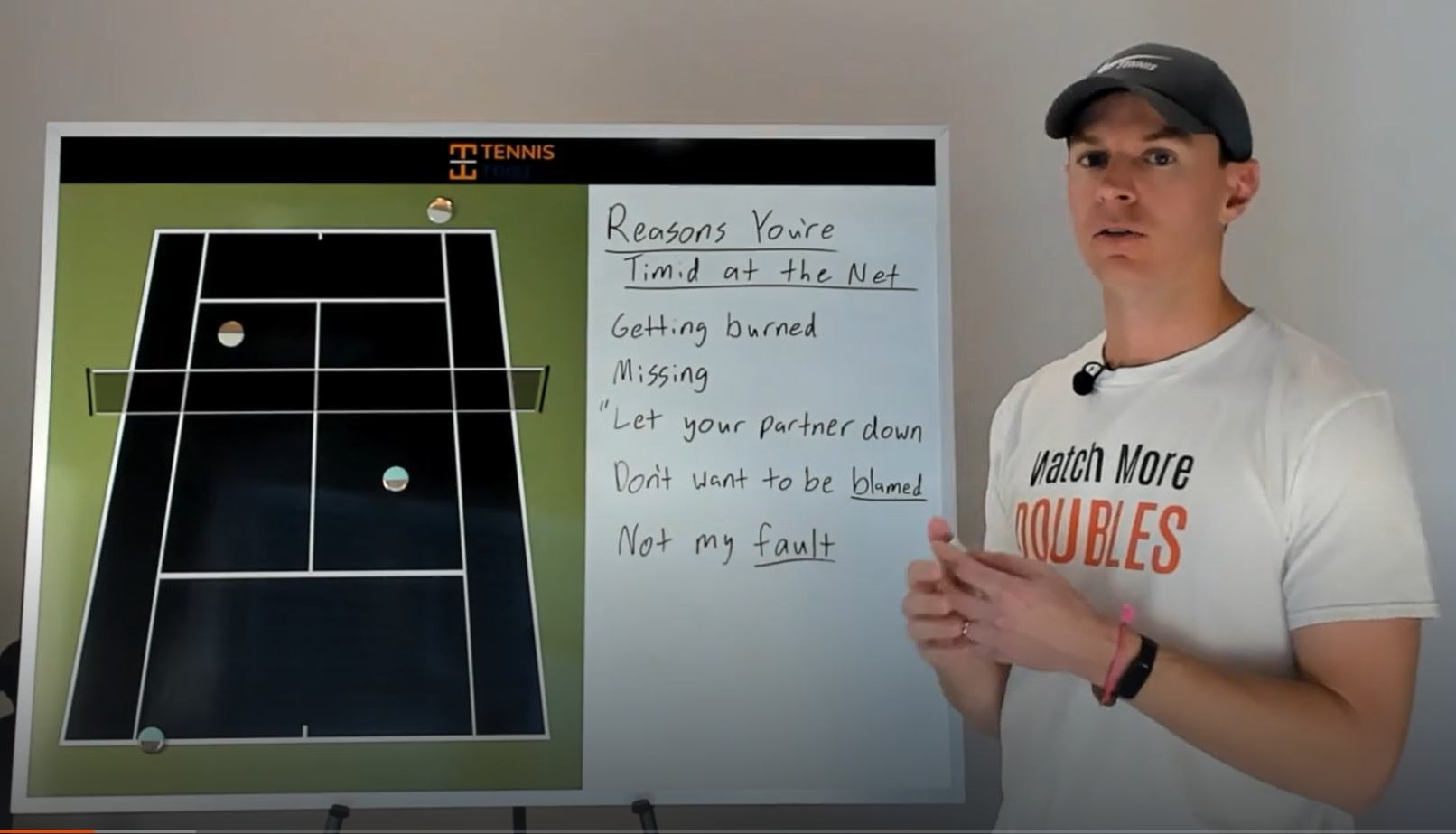
You’ll learn from Will Boucek, an ATP & WTA Doubles Strategy Analyst
When tossing the ball into the proper spot for a kick serve, you will need to hold onto the tennis ball slightly longer, which will force the ball slightly behind your head and over your left shoulder for a right-handed player (opposite for the left-handed player).
Getting the ball to this location sets the stage for being able to brush up and across the ball, creating topspin and sidespin for an effective kick serve.
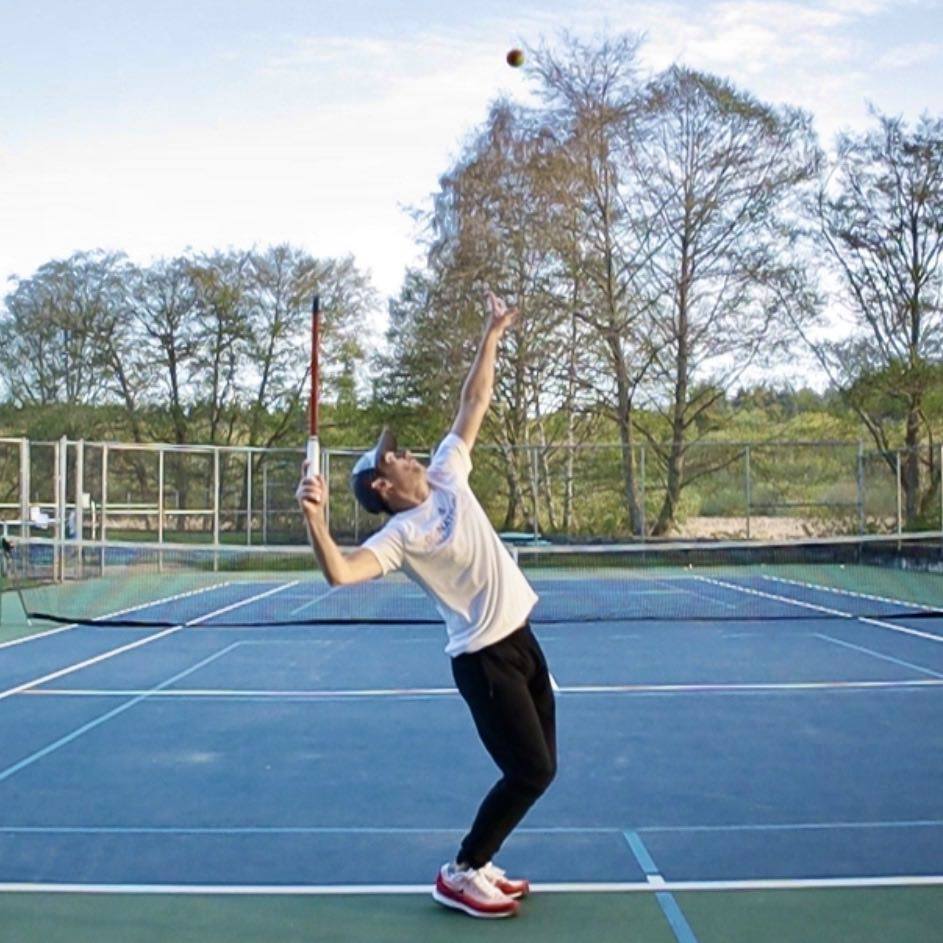
Step #2: Loading for the Kick Serve – Bend Your Knees, Not Your Back
Certain precautions need to be taken when learning good kick serve technique. Understanding how to avoid what I call the backbreaker will keep you from becoming injured in the lower back after repeated use of the kick serve.
How do you prevent the backbreaker?
First, you need to understand that hitting a kick served does not require you to bend at your back to hit the ball.
It requires you to bend at your knees.
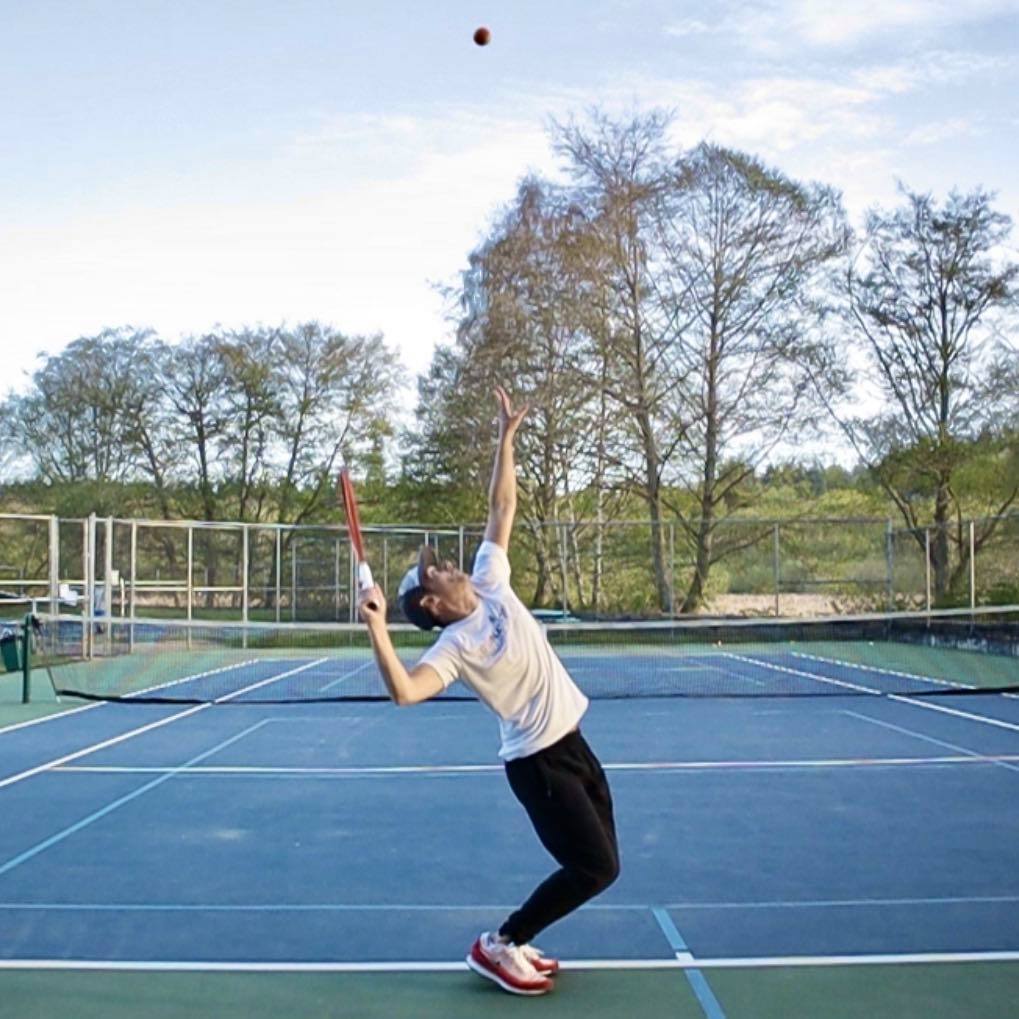
A few other things to keep in mind while you’re loading for the kick serve are:
- Keep your chest up.
- Your eyes should be looking up towards the ball.
- Keep your back straight with good posture while leaning back.
By doing this, you will be preventing injury but allowing yourself to lean back, reach the ball behind you, and hit a proper kick serve.
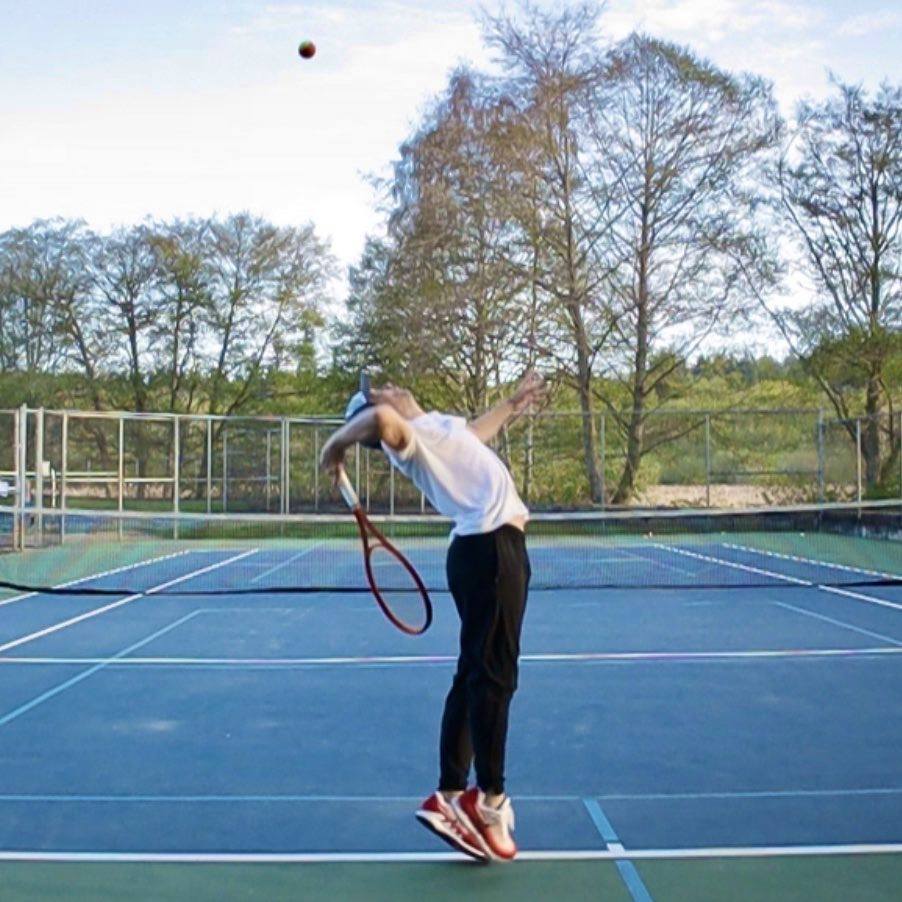
Step #3: Brush the Ball at Contact Point & Swing Along the Baseline
The contact point of the kick serve is slightly behind your head and over your left shoulder (for a right-handed player).
Not only do you need to toss it into this location, but you will need to allow the ball to fall lower than you would on other serves. By letting the ball drop about a foot lower, you will be able to strike the ball with the tennis racquet almost sideways as opposed to straight up and down like you would on a flat serve. Ideally, the racquet will be at about a 45 degree angle.
MOST POPULAR COURSE!
25 Winning Doubles Tactics
Guaranteed to help you play smarter & win more matches.
- Over 50 video doubles lessons
- 60+ ATP & WTA points analyzed
- Nearly 3 hours of strategy content
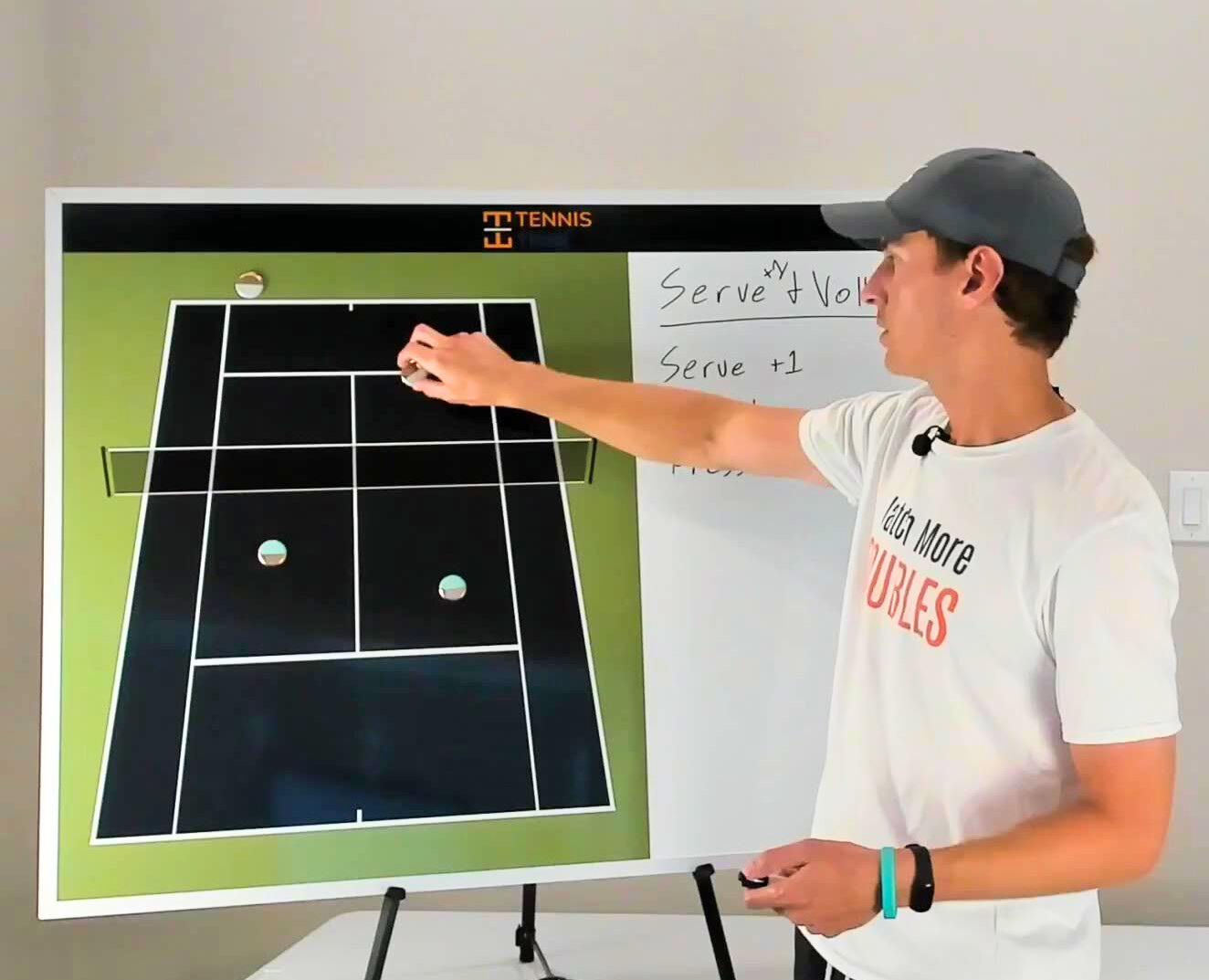
Will Boucek – Doubles Strategy Analyst for ATP & WTA Players and Team USA at the 2024 Olympics
Similar to a topspin forehand, the racquet needs to be sideways to brush up the ball and generate effective topspin for the kick serve.
Serving with the combination of the right toss location and letting the ball fall lower than you typically would, allows the racquet to strike the ball moving low to high and left to right, creating a topspin and sidespin rotation.
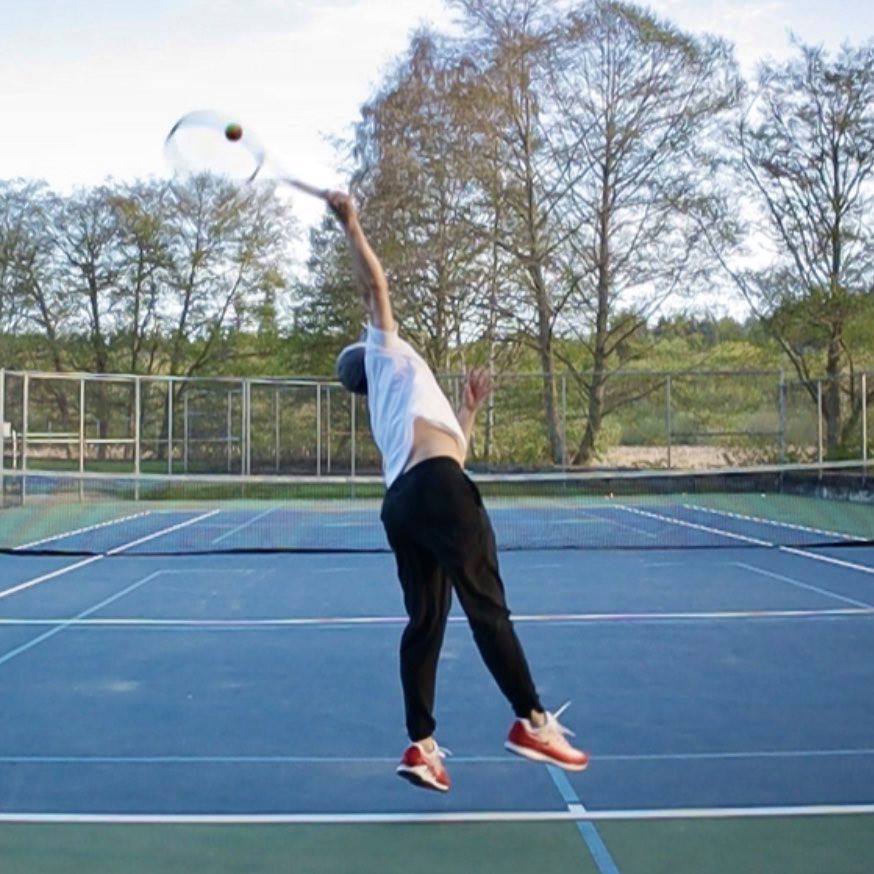
Your swing path will be slightly different as well. With a kick serve, you don’t swing towards the service box. Instead, you should swing along the baseline to help create topspin.
If you feel like your kick serve isn’t spinning like you want, adjust your swing path.
- Swinging up will create the topspin on the kick serve.
- Swinging sideways, along the baseline, will create sidespin on the kick serve.
Step #4: Maintaining Your Balance, Don’t Fall Backwards
You need proper balance for a strong kick serve. Many people fall off to the side, usually because they toss it behind them.
We want to make sure you’re not doing that.
First, practice your kick serve finishing where you started. Make sure you’re not leaning or falling backwards.
After you get that down, you can try a more advanced landing by jumping slightly forward into the tennis court. You may need to toss the ball in front more to do this.
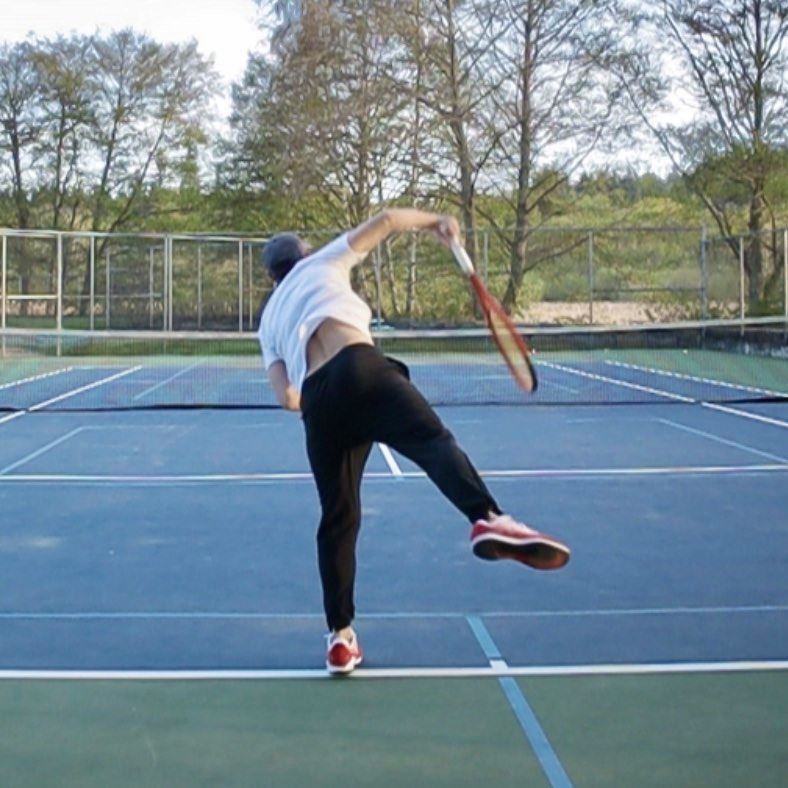
Step #5: The Finish & Follow Through on the Kick Serve
Two types of finishes are common in a kick serve.
The first is finishing with the racquet off to the same side as your hitting arm or dominant arm.
When I think about this type of finish, Jim Courier always comes to mind. There is nothing wrong with this type of finish. It actually can help to bring the racquet through the swing path needed to get the ball to kick.

This 55-page Ebook includes EVERYTHING you need to know
Serve Tactics Guaranteed to Make Holding Serve Easy
Learn to hide your weaknesses, force return errors, and create game plans with your doubles partner to hold serve more often.
However, the most common type of finish is the standard finish. The racquet takes a path that swings across the body, ending on the opposite side of your hitting arm or dominant arm.
Either of these finishes is acceptable and is completely preference to how you want to finish your kick service motion.
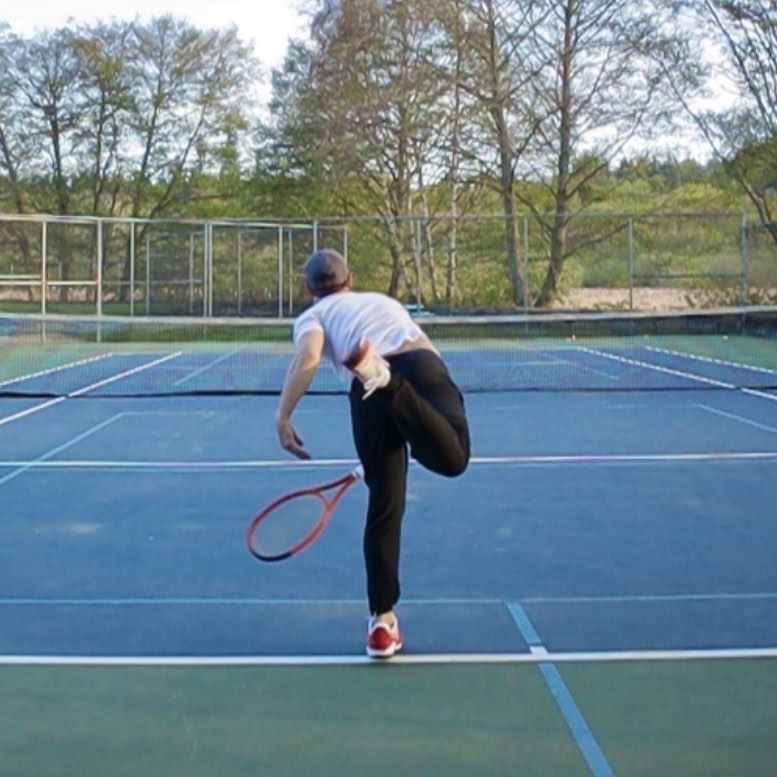
The Best Times to Use a Kick Serve in a Match
In a tennis match, you need to use variety on your serve to keep your opponent guessing. That said, there are several times that it is beneficial to use a kick serve.
Use the Kick as a 2nd Serve
The advantage you have with a kick serve, is that it can be more consistent than a flat or even a slice serve. The topspin on the ball allows high net clearance and helps the ball dip back down into the service box.
This is why many players use the kick serve for an effective second serve. It is difficult to return and can be made consistently so you don’t double fault.
Hit it When You Serve & Volley
Another great time to use a kick serve is for the serve and volley. Since the ball moves slower on a kick serve than a flat serve, it allows more time for the server to get to the net.
Hit a Kick Serve in the Ad Court
Against right-handed players in the ad court is an especially good time to hit a kick serve. You will hit it to their backhand and move them far outside of the court, opening the court up for your next shot.
This was a guest post by Jordan Coons.
Jordan Coons is the founder Tennis Beyond and a certified United States Professional Tennis Association teaching professional. He holds an Elite designation, the highest tested level achievable within the organization. He is also a certified USPTA Tester, where tennis professionals go through rigorous testing with him to gain their teaching credentials. Jordan is a published author in tennis improvement and has 20 years of tennis teaching excellence.

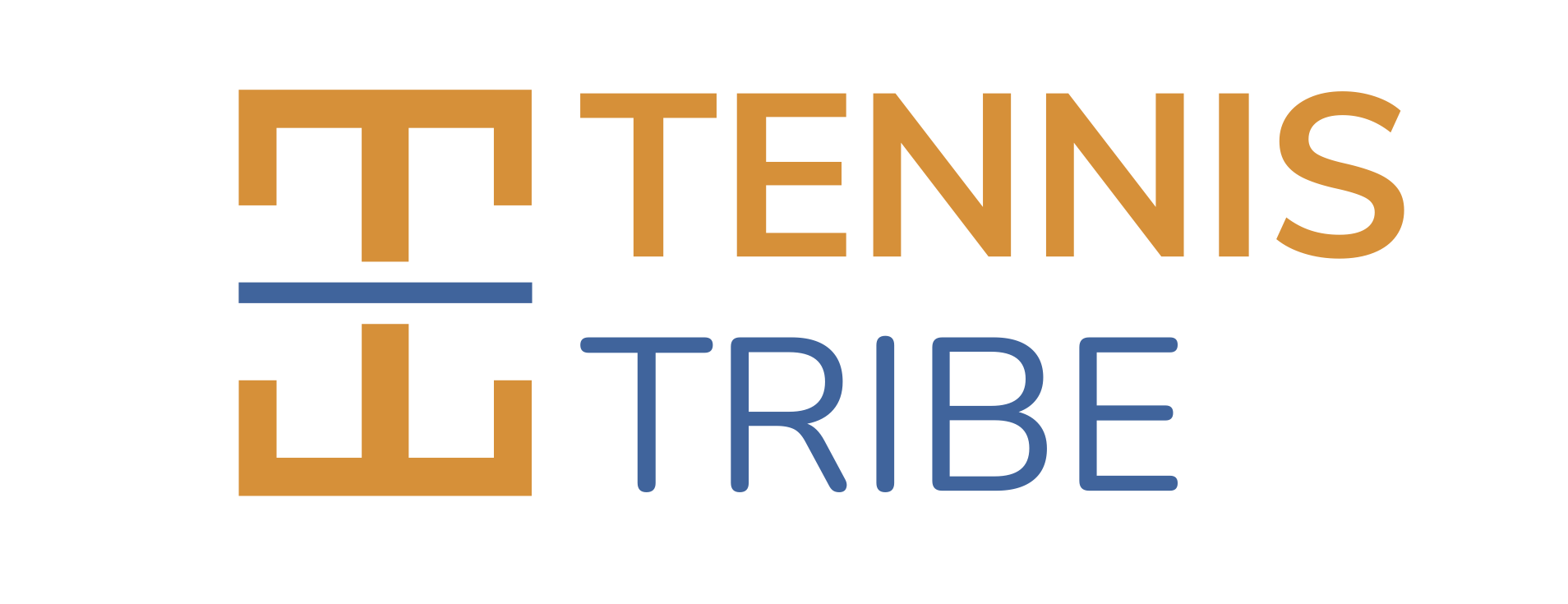
I have been working to improve my 2nd serve consistency. My first serve is strong but 2nd is unreliable and kick is the obvious path to less double faults.
I’ve watched numerous video’s on the kick serve and whilst they help, they don’t go into this level of detail, like how the importance of first achieving stability, falling backwards, keeping your back straight, etc.
The instruction is clear and well structured in manageable steps. Thanks very much and as someone new to tennis tribe I’ll take a look what else you have to offer.
Thanks Phil! Jordan is a great coach. Hope it helps you on the tennis court 🙂
Speaking of Jim Courier, I heard him say that for his kick serve, he would put the butt cap inside his hand so that he would get a callus in his palm. I guess that kept him loose. Any comment on that?
This article was very helpful. 🙂
Thanks Carlos! Jordan is a great tennis coach 🙂